Idle No More is a social and political movement that emerged in Canada in 2012. The movement was a response to the Omnibus Bill C-45, which significantly amended legislation related to land and water resources, environmental protection, and Indigenous governance. At its core, the Idle No More movement sought to promote Indigenous sovereignty and rights, challenge colonialism and environmental destruction, and build community and solidarity among Indigenous peoples and their allies. This article will provide an overview of the origins and development of the Idle No More movement, its impact and legacy, and the continuing struggles facing Indigenous peoples in Canada and beyond.
Introduction to the Idle No More Movement
The Idle No More movement is a grassroots, Indigenous-led movement that arose in Canada in late 2012. It began as a response to the Canadian government's proposed changes to environmental protection laws and the Indian Act, which would have significantly impacted Indigenous peoples in Canada. Since its inception, the movement has grown to encompass a wider range of issues, including Indigenous sovereignty, land rights, and self-determination.
Overview and Origin of the Movement
The Idle No More movement was born out of frustration and anger among Indigenous peoples in Canada about the lack of consultation and blatant disregard for their rights by the Canadian government. The movement was sparked by the introduction of Bill C-45, which included changes to the Indian Act, which regulates the relationships between Indigenous peoples and the Canadian government. The bill also included significant changes to environmental protection laws, which Indigenous leaders argued would have a negative impact on their communities.
Historical Context: Indigenous Rights and Sovereignty in Canada
Colonialism and Oppression of Indigenous Peoples
Indigenous peoples in Canada have a long history of colonialism and oppression at the hands of European settlers and the Canadian government. This includes forced relocation, residential schools, and the loss of land and resources.
Treaties and Land Dispossession
Throughout the 19th and 20th centuries, the Canadian government signed several treaties with Indigenous peoples, promising to protect their rights and lands. However, these treaties were often disregarded or broken, resulting in the loss of land and resources for Indigenous communities.
The Catalyst: Understanding the Omnibus Bill C-45
Overview of the Bill and its Implications on Indigenous Peoples
Bill C-45, also known as the Jobs and Growth Act, was introduced by the Canadian government in October 2012. The bill included amendments to the Indian Act and significant changes to environmental protection laws. These changes were seen as an attack on Indigenous rights and sovereignty.
Resistance to the Bill from Indigenous Communities and Leaders
Indigenous leaders and communities immediately mobilized against Bill C-45, citing concerns about the lack of consultation and the impact the changes would have on their communities. They argued that the changes would make it easier for corporations to exploit Indigenous lands and resources without their consent.
The Emergence of Idle No More: Social Media and Protest Tactics
Role of Social Media in Mobilizing and Networking Activists
The Idle No More movement quickly gained momentum on social media, with activists using hashtags like #IdleNoMore to share information and organize protests. This allowed the movement to reach a wider audience and mobilize quickly.
Types of Protests and Actions Taken by Idle No More
The Idle No More movement used a variety of tactics to raise awareness and pressure the Canadian government to address their concerns. These included rallies, blockades, and flash mobs. The movement also organized a series of teach-ins to educate the public about Indigenous rights and sovereignty.
Impact and Legacy of the Movement: Reflections and Assessment
The Idle No More movement started in 2012 as a response to proposed environmental legislation and quickly grew to become a powerful voice for Indigenous peoples in Canada. The movement was successful in raising awareness and sparking conversation about Indigenous sovereignty, rights, and the ongoing effects of colonialism. The legacy of Idle No More is visible in the continued efforts of Indigenous peoples to reclaim their land, language, and culture.
Analysis of the Movement's Effectiveness and Achievements
One of the most significant achievements of the Idle No More movement was its ability to mobilize Indigenous peoples and their allies across Canada and around the world. The movement was successful in raising awareness of Indigenous issues and pushing the Canadian government to engage in meaningful dialogue with Indigenous leaders. The movement also played a role in the rejection of the proposed Northern Gateway and Keystone XL pipelines.
Challenges and Criticisms of the Movement
One criticism of the Idle No More movement is that it lacked a clear message and specific demands. Others criticized the movement for its reliance on social media and the internet, which some argued reduced its impact and effectiveness. Additionally, some Indigenous peoples felt that the movement excluded them or did not accurately reflect their concerns and experiences.
The Continuing Struggle: Indigenous Resistance and Decolonization
The issues faced by Indigenous peoples in Canada are complex and ongoing. From land reclamation to language revitalization, from access to healthcare to education, the struggle for Indigenous rights and decolonization continues. The Idle No More movement sparked a renewed focus on these issues and paved the way for continued resistance and activism.
Current Issues Facing Indigenous Peoples in Canada
Indigenous peoples in Canada continue to face challenges related to land and resource rights, access to healthcare and education, and the ongoing legacy of residential schools. These issues are further complicated by the impacts of climate change and the COVID-19 pandemic.
Ways Forward for Decolonization and Empowerment
Decolonization and Indigenous empowerment require systemic change and a commitment to reconciliation. This includes respecting Indigenous sovereignty, recognizing and honoring treaty rights, and addressing the ongoing effects of colonialism. It also requires meaningful engagement with Indigenous peoples and communities in decision-making processes.
Lessons Learned: Insights for Future Activism
The Idle No More movement offers important lessons for future activism. One key strategy was the use of social media and the internet to mobilize support and raise awareness. The movement also emphasized the importance of community building, solidarity, and grassroots organizing.
Key Strategies and Tactics for Successful Activism
Successful activism requires clear messaging, strategic planning, and a commitment to community engagement and mobilization. It also requires allies and partnerships with other social justice movements.
Importance of Community Building and Solidarity
Community building and solidarity are crucial for successful activism. This includes building relationships and partnerships with other social justice movements, as well as engaging with Indigenous peoples and communities in a respectful and collaborative way.
Conclusion: The Significance of Idle No More for Indigenous Peoples and Beyond
The significance of the Idle No More movement extends beyond Indigenous peoples in Canada. The movement raised important questions about environmental sustainability, Indigenous sovereignty, and the ongoing impacts of colonialism. It also paved the way for continued resistance and activism on these issues.
Impact of the Movement on Indigenous Sovereignty and Rights
The Idle No More movement contributed to a renewed focus on Indigenous sovereignty and rights. It helped to shift the conversation and raised awareness of the ongoing impacts of colonialism on Indigenous peoples and communities.
Implications for Future Social and Political Movements
The Idle No More movement offers important insights for future social and political movements. It demonstrated the power of grassroots organizing and the importance of community building and solidarity. It also highlighted the need for ongoing commitment to Indigenous sovereignty and decolonization.In conclusion, the Idle No More movement has had a significant impact on Indigenous rights, sovereignty, and environmental protection in Canada and beyond. Through the use of social media, protests, and community building, Idle No More has become a powerful force for decolonization and Indigenous empowerment. As we move forward, it is important to continue the work of Idle No More and support Indigenous peoples in their struggles for justice and self-determination.
Frequently Asked Questions (FAQ)
What is the significance of the Omnibus Bill C-45?
The Omnibus Bill C-45 was a controversial piece of legislation introduced by the Canadian government in 2012. It had a significant impact on Indigenous rights and sovereignty by amending key legislation related to land and water resources, environmental protection, and Indigenous governance. The bill was a catalyst for the Idle No More movement as it threatened Indigenous lands, treaty rights, and the environment.
What were some of the key protests and actions taken by Idle No More?
Idle No More utilized a variety of tactics to raise awareness and mobilize support for Indigenous rights and sovereignty. These included flash mobs, round dances, teach-ins, hunger strikes, and blockades. The movement also organized a number of large-scale rallies and marches, including a National Day of Action in December 2012 that saw protests held across Canada and around the world.
What has been the legacy of the Idle No More movement?
The legacy of Idle No More can be seen in its long-term impact on Indigenous rights and sovereignty, as well as its influence on other social and political movements. The movement helped to inspire a new generation of Indigenous activists and allies, and brought attention to issues of colonization, environmental destruction, and social justice. Idle No More also helped to build solidarity and community among Indigenous peoples, strengthening their voices and struggles for self-determination.
How can individuals support Indigenous sovereignty and rights?
There are many ways that individuals can support Indigenous sovereignty and rights, including educating themselves on the history and ongoing struggles of Indigenous peoples, supporting Indigenous-led initiatives and organizations, and advocating for policy changes that promote Indigenous rights and sovereignty. It is also important to engage in meaningful dialogue and relationship-building with Indigenous peoples and communities, and to recognize and challenge the ongoing impacts of colonization and oppression.
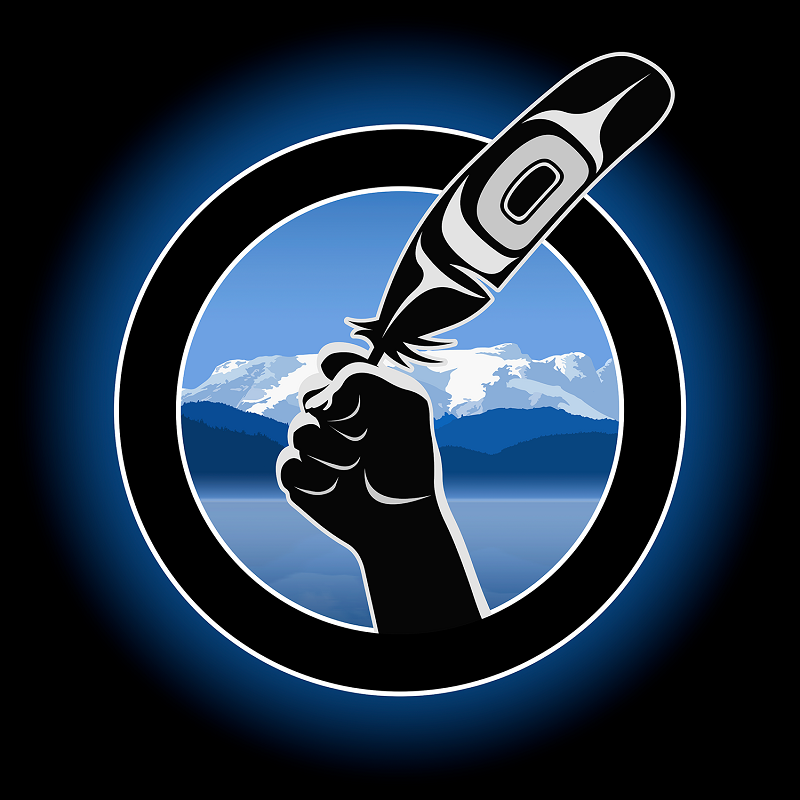
"Idle No More calls on all people to join in a peaceful revolution, to honour Indigenous sovereignty, and to protect the land and water"
INM has and will continue to help build sovereignty & resurgence of nationhood.
INM will continue to pressure government and industry to protect the environment.
INM will continue to build allies in order to reframe the nation to nation relationship, this will be done by including grassroots perspectives, issues, and concern.

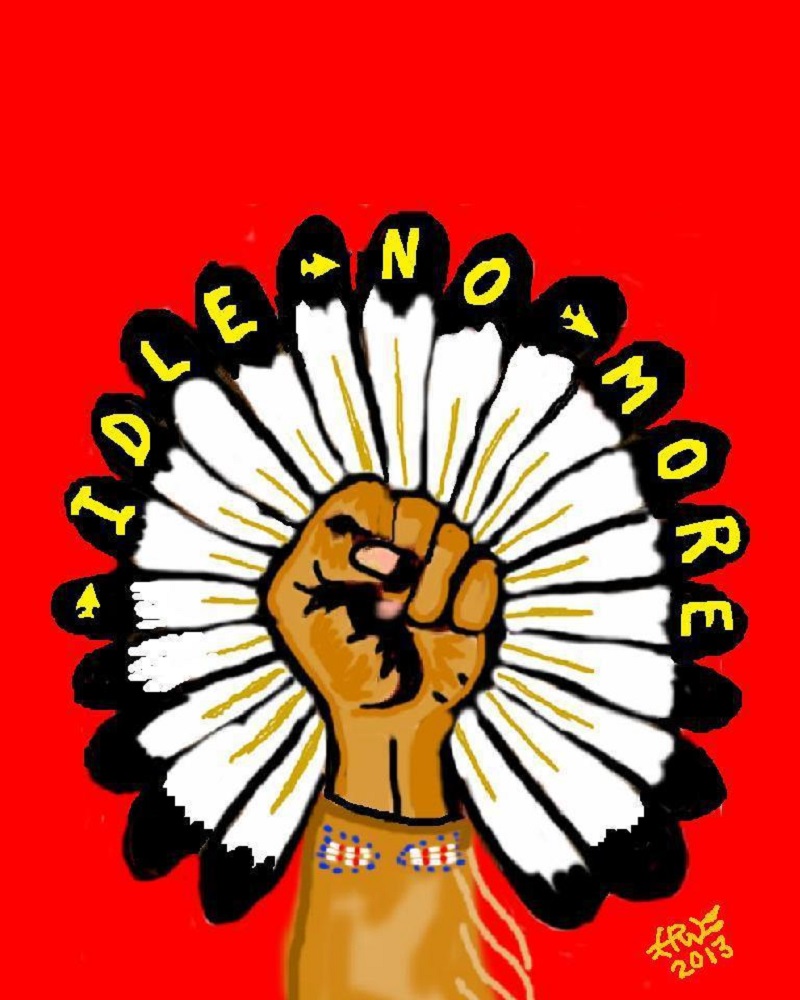


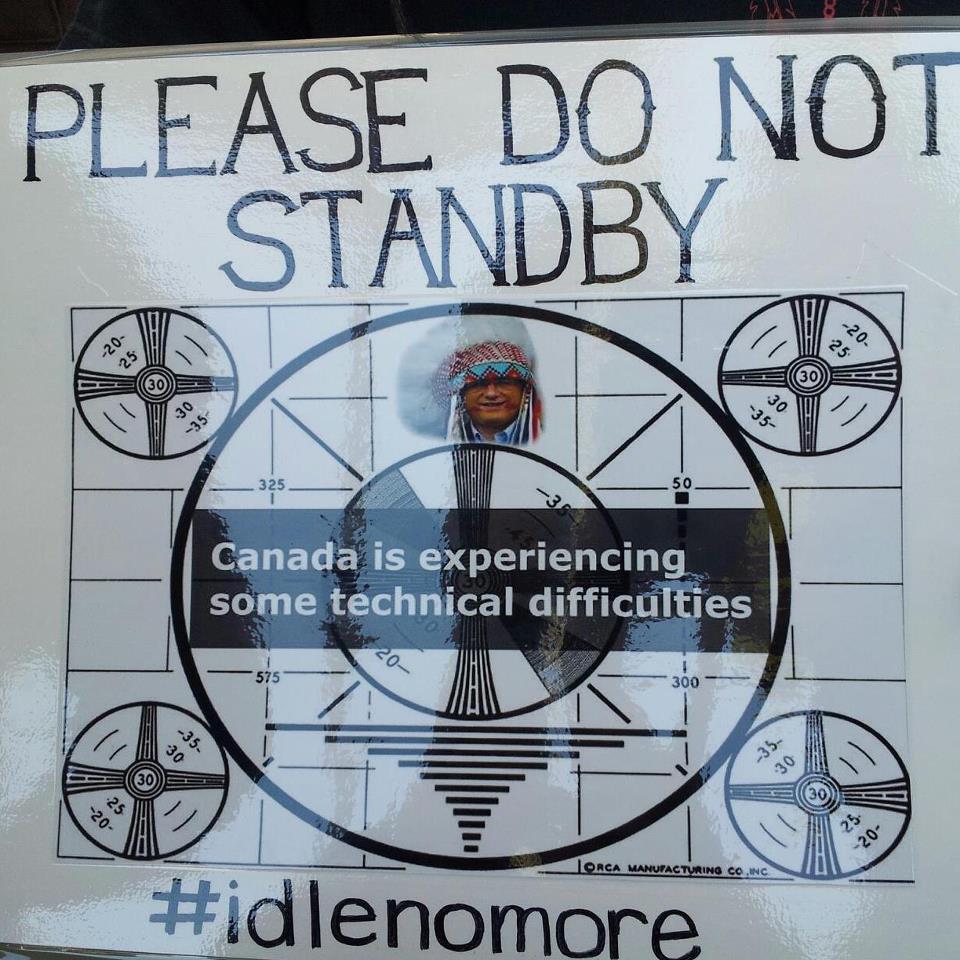
Please add relevant material in the comment section below any page on this site.


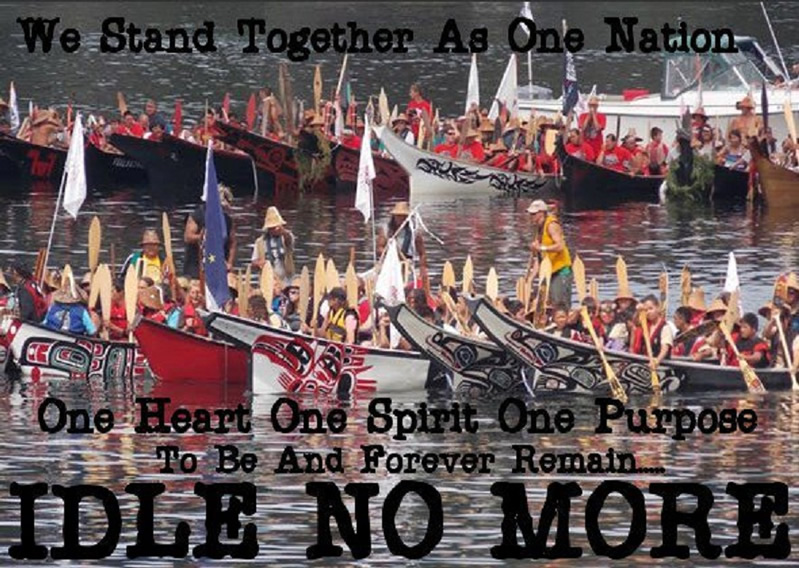
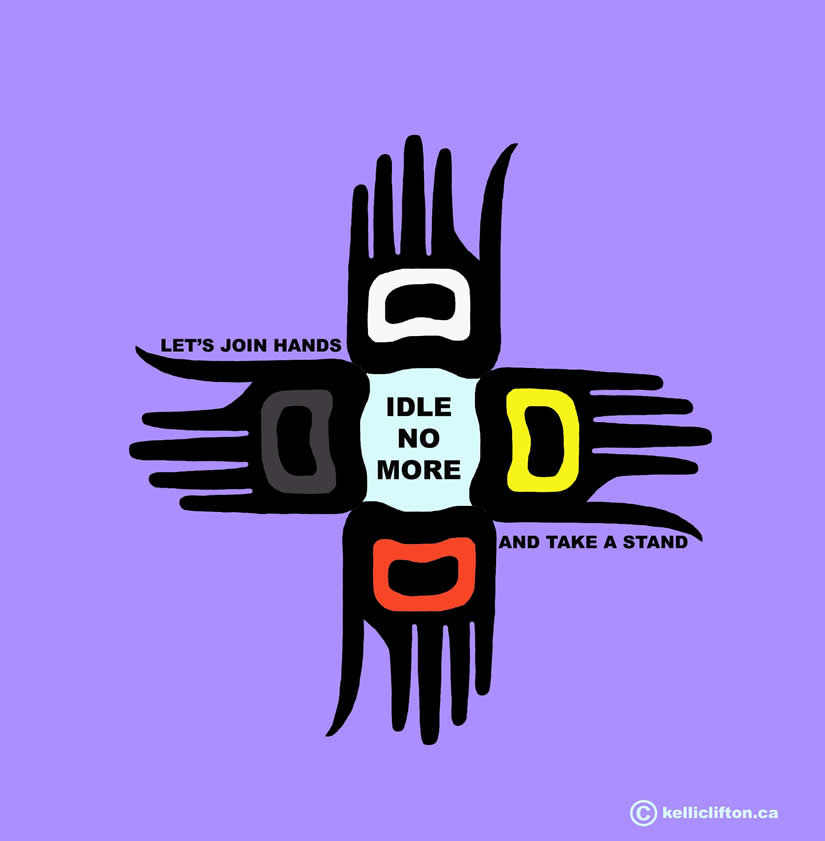







Idle No More began with 4 ladies; Nina Wilson, Sylvia McAdam, Jessica Gordon & Sheelah McLean. The focus is on grassroots voices, treaty and sovereignty; it began in the early part of October when discussing Bill C 45. All 4 women knew that this was a time to act, as this bill and other proposed legislation would affect not only Indigenous people but also the lands, water and the rest of Canada.
Please add relevant material in the comment section below any page on this site.
